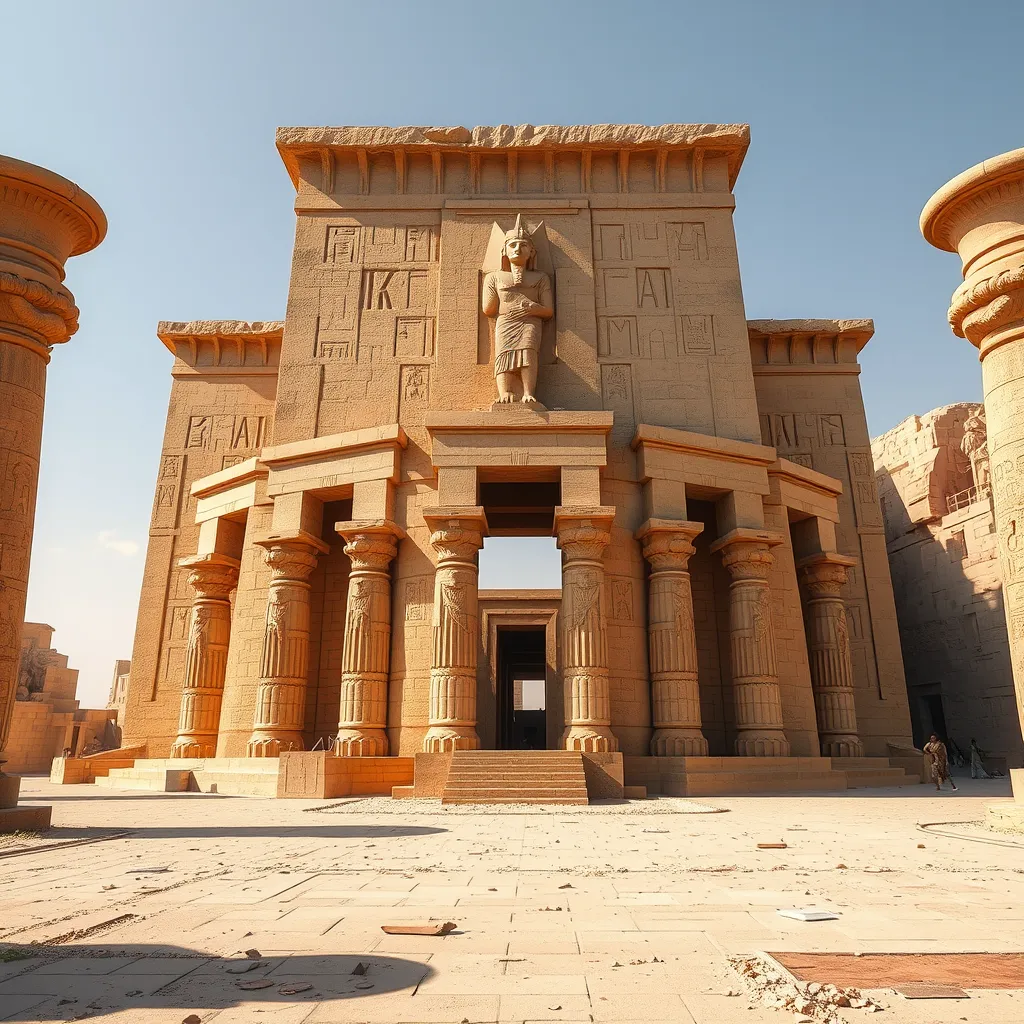The Temple of Horus at Edfu: A Journey Through the Sacred Falcon’s Domain
I. Introduction
The Temple of Horus, located in the ancient city of Edfu, stands as one of the most well-preserved temples of ancient Egypt. Dedicated to the falcon-headed god Horus, this magnificent structure embodies the rich spiritual and cultural heritage of the time. It serves as a vital piece of evidence for understanding the religious practices and architectural advancements of the ancient Egyptians. Situated on the west bank of the Nile, between Luxor and Aswan, the temple’s historical context is deeply intertwined with the mythology of Horus, the god of the sky and kingship.
II. Historical Background
The origins of the Temple of Horus can be traced back to the Ptolemaic period, specifically between 237 and 57 BC. Built on the site of an earlier temple dating to the Middle Kingdom, this grand edifice reflects the Ptolemaic dynasty’s commitment to the restoration of ancient Egyptian traditions. Key historical events associated with Edfu include the establishment of the Ptolemaic rule, which sought to merge Greek and Egyptian cultures.
- The temple’s construction was initiated by Ptolemy III and completed by his successors, symbolizing the political stability of the dynasty.
- Throughout history, the Temple of Horus has been a focal point for various religious and political ceremonies.
III. Architectural Marvels
The Temple of Horus is renowned for its exceptional design and layout, which exemplifies the grandeur of ancient Egyptian architecture. The temple stretches approximately 137 meters long and 79 meters wide, making it one of the largest temples in Egypt.
- Main Entrance: The entrance is flanked by two massive stone towers, adorned with intricate carvings.
- Hall of Offerings: This vast hall features a beautiful ceiling and is supported by multiple columns, each decorated with reliefs depicting various deities.
- Sacred Lake: A significant architectural feature, this lake was used for purification rituals.
The materials used in construction primarily included sandstone, which was intricately carved to depict various mythological scenes. The temple’s dimensions and design reflect the Egyptians’ understanding of symmetry and proportion, further emphasizing its spiritual significance.
IV. Symbolism and Iconography
The Temple of Horus is adorned with a plethora of decorations that hold deep symbolic meanings. The iconography throughout the temple provides insight into the mythology and religious practices of the time.
- Hieroglyphics: The walls are inscribed with hieroglyphics that narrate the myth of Horus and his battles against Set, symbolizing the triumph of good over evil.
- Reliefs: Notable reliefs depict Horus in various forms, emphasizing his role as a protector and a deity of the pharaohs.
- Falcon Symbolism: The falcon is a central symbol of Horus, representing kingship and the divine right to rule.
The intricate decorations serve not only as artistic expressions but also as a means of conveying religious narratives and affirming the authority of the pharaohs.
V. Religious Significance
The Temple of Horus was a major center for worship and religious activities associated with Horus. Pilgrimages to the temple were common, as it was believed to be a place where the divine could be accessed.
- Worship Practices: Rituals conducted at the temple included offerings, prayers, and ceremonies aimed at honoring Horus.
- Festivals: The temple hosted significant festivals, such as the “Festival of the Beautiful Reunion,” celebrating the union of Horus and Hathor.
- Pilgrimage Site: The temple attracted thousands of pilgrims who sought blessings and healing.
The religious significance of the temple extended beyond Edfu, influencing the broader practices across Egypt.
VI. Archaeological Discoveries
The Temple of Horus has been the focus of extensive archaeological research, leading to numerous discoveries that have enhanced our understanding of ancient Egyptian culture.
- Key Findings: Excavations have revealed various artifacts, including statues, tools, and religious items.
- Modern Contributions: Modern archaeology has employed advanced techniques, such as 3D scanning, to document the site’s features accurately.
- Preservation Efforts: Ongoing preservation efforts aim to protect the temple from environmental damage and human impact.
These discoveries not only shed light on the temple’s historical significance but also contribute to our understanding of ancient Egyptian society and its values.
VII. Visiting the Temple Today
The Temple of Horus remains a popular destination for tourists and pilgrims alike, attracting those interested in ancient history and culture. Practical information for visitors includes:
- Location: The temple is easily accessible from the nearby city of Edfu, with various transportation options available.
- Opening Hours: The temple is typically open to visitors year-round, though hours may vary seasonally.
- Guided Tours: Many guided tours are available, offering insights into the temple’s history and architecture.
Highlights for visitors include the grand entrance, the detailed hieroglyphics, and the serene Sacred Lake. Surrounding Edfu, local culture thrives with markets, traditional crafts, and delicious Egyptian cuisine, making it an enriching experience for all.
VIII. Conclusion
The Temple of Horus at Edfu stands as a testament to the enduring legacy of ancient Egyptian civilization. Its magnificent architecture, rich symbolism, and religious significance highlight the importance of preserving such historical sites for future generations. Exploring the Temple of Horus offers a unique opportunity to appreciate the artistry and spirituality of ancient Egypt. By visiting and learning about these remarkable sites, we can foster a greater understanding and appreciation of our shared heritage.




